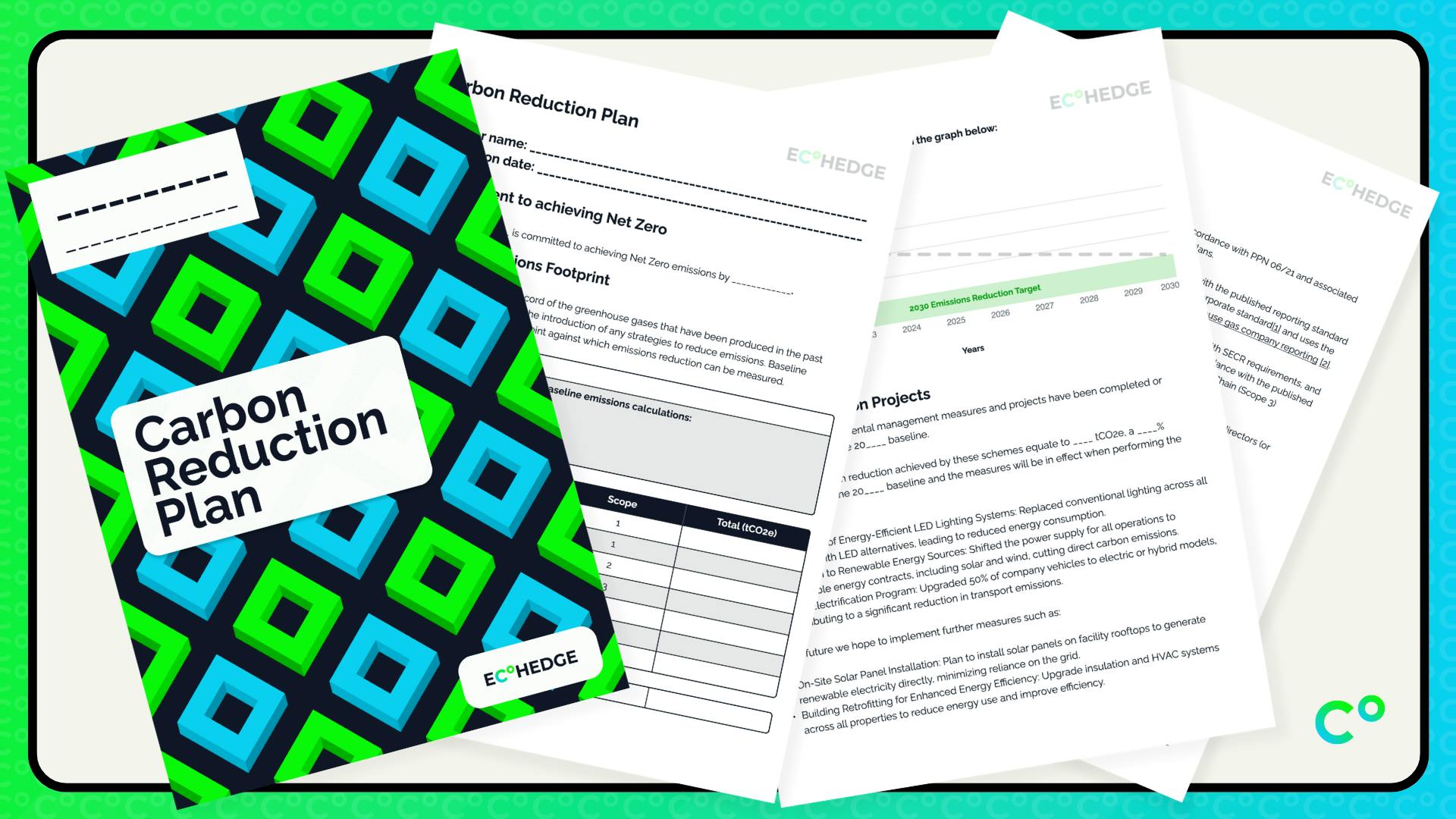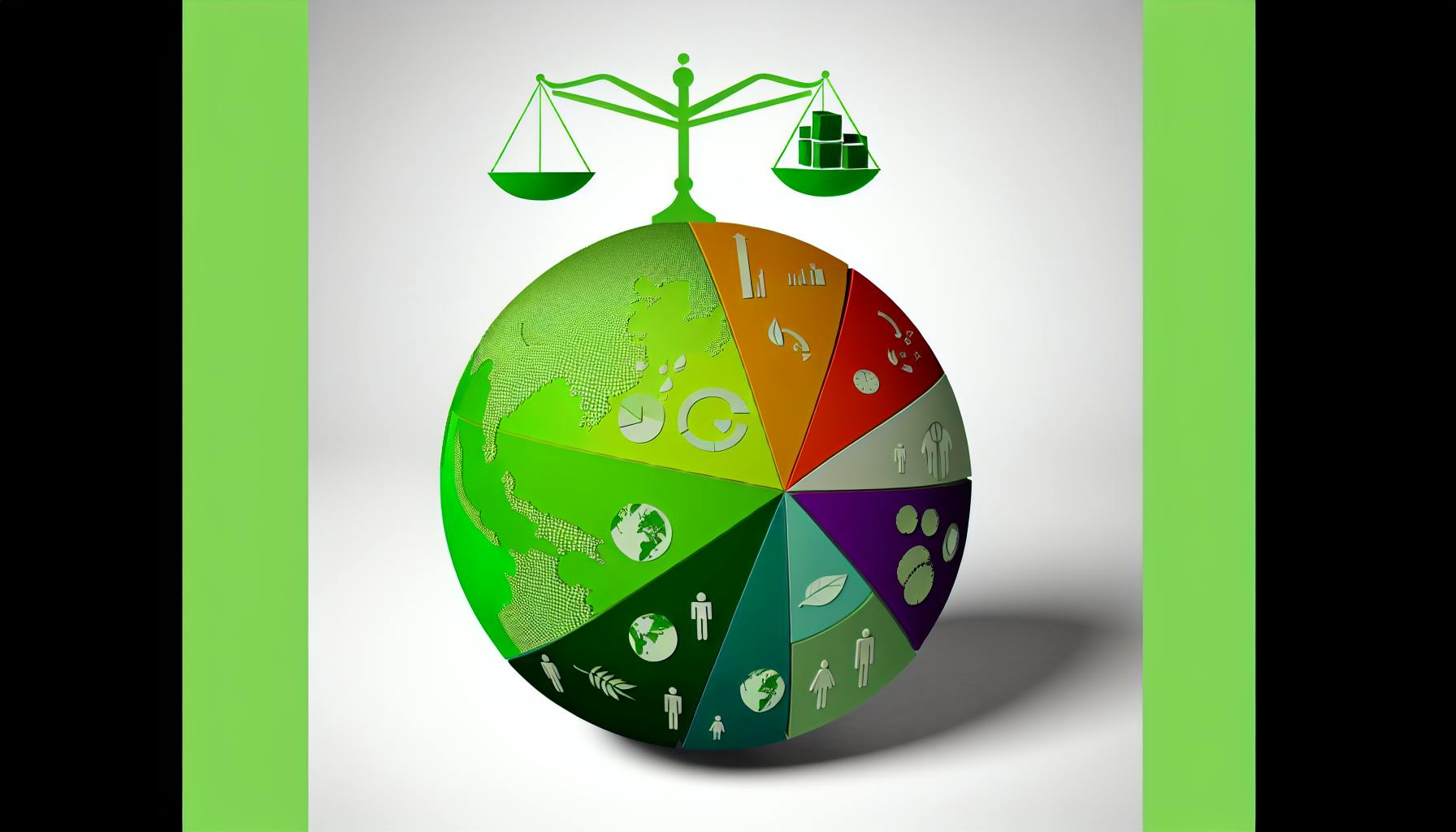Businesses today face growing expectations to measure and reduce their carbon footprint.
Using a carbon footprint tool can provide valuable insights to help companies identify opportunities to cut emissions and costs.
In this article, we'll explore what a carbon footprint tool is, how to select the right one, and how leveraging carbon insights can unlock sustainability and growth for your business.
The Imperative of Carbon Tracking for Businesses
Companies today face increasing expectations from stakeholders to address their climate impacts. Small and medium enterprises should measure their carbon footprint to stay ahead of emerging regulations, satisfy stakeholder demands, realize operational efficiencies, and mitigate sustainability risks. Using the latest carbon footprint tools can provide the insights needed to build business resilience.
Navigating Climate Accountability
Regulatory requirements around sustainability disclosures and carbon emissions are accelerating globally. By quantifying their greenhouse gas emissions early, businesses can more easily comply with current and future reporting mandates, avoiding penalties and reputational damage. A carbon footprint calculator also helps companies strategically reduce their footprint year-over-year to meet emission caps and pay lower carbon taxes.
Meeting the Expectations of Stakeholders
Key stakeholders like investors, customers, and employees are increasingly assessing companies on sustainability factors and environmental impact. A business that understands its carbon footprint can readily share emissions data and sustainability stories to attract capital, sales, and talent. By contrast, lacking proper measurement tools leads to missed opportunities with stakeholders seeking climate action and transparency.
The Business Risks of Carbon Negligence
Failing to measure and reduce emissions exposes companies to sustainability risks. Material and energy inefficiencies directly impact the bottom line but remain hidden without a carbon accounting tool. And by identifying emissions hotspots across operations, businesses can lower costs in heating, electricity, logistics and more. Being carbon-negligent also invites scrutiny from activist investors and the threat of litigation.
In short, a carbon footprint tool unlocks essential business insights, providing the visibility and proof points needed to navigate emerging climate regulations, satisfy stakeholders, realize operational savings, and mitigate sustainability risks. Small and medium enterprises that are accountable today will be best positioned for long-term resilience.
What is the tool to measure carbon footprint?
Greenly is one example of a carbon footprint calculation tool that enables businesses to measure and track their greenhouse gas emissions over time. This easy-to-use SaaS platform analyzes key data inputs like office size, employee headcount, transportation usage, and energy sources to generate an estimate of a company's annual carbon footprint.
The tool simplifies the complex process of carbon accounting using automated data collection and built-in emissions factors. It generates custom analytics on emission sources, allowing users to identify "hot spots" to focus reduction efforts. Dashboards track progress towards targets and facilitate reporting.
Leveraging a purpose-built platform like Greenly to measure, monitor, and mitigate emissions can offer valuable business insights. Beyond ensuring compliance with evolving climate regulations, a sharper focus on environmental impact can reveal operational inefficiencies, highlight cost-savings opportunities, and strengthen reputation with increasingly sustainability-conscious stakeholders. Adoption of such tools signals a proactive, forward-thinking approach to addressing climate change.
How can I measure my carbon footprint?
Measuring your carbon footprint can seem daunting at first, but breaking it down into simple steps makes it much more manageable. Here's a quick guide to get you started:
Use an online carbon calculator
The easiest way is to use a carbon footprint calculator tool. There are many good options available, both free and paid. Simply input details about your home energy use, transportation, flights, shopping, food choices and more. The tool will then analyze your inputs and provide a report with your estimated annual carbon emissions.
Popular free calculators include the UN Environment Programme and US EPA versions. For more comprehensive and accurate results, consider a paid tool like EcoHedge. Their software integrates directly with your utility bills and accounts for full lifecycle emissions.
Track major emission sources
While the calculator does the number crunching work, you need to provide the raw data. Focus on these top footprint contributors:
- Energy use - tally monthly natural gas, electricity, heating oil bills
- Transportation - record miles driven and fuel efficiency for each vehicle
- Air travel - note number and distance of flights
Monitoring these high-impact areas will capture 80-90% of emissions for most people.
Offset remaining emissions
Once you understand your footprint, take steps to reduce it. Switch to renewable energy, improve home efficiency, drive less and fly less. For unavoidable emissions, purchase verified carbon offsets to counterbalance them. Offsetting helps reach net zero emissions while transitioning to a low carbon lifestyle.
With the right carbon accounting tools and some diligent tracking, determining your environmental impact is quite feasible. Spend an hour or two to crunch the numbers, then reassess each year. Use the insights to set goals, engage others and shrink your carbon footprint over time.
What is the name of the carbon footprint tool?
The CoolClimate Carbon Footprint Calculator was developed by researchers at the University of California, Berkeley to help individuals and households measure and track their carbon footprint. It is widely considered one of the most comprehensive personal carbon calculators available.
The calculator allows users to estimate their annual carbon dioxide emissions based on their lifestyle choices. It takes into account factors like transportation, housing, food, goods, and services to provide users with a detailed breakdown of their footprint. The tool also offers personalized suggestions on actions people can take to reduce their impact.
What is carbon footprint software?
Carbon footprint software provides businesses with valuable insights into their environmental impact. This tool automatically tracks an organization's greenhouse gas emissions across all scopes and sources. It compiles historical emissions data, identifies hotspots for reduction, and models future trajectories to help companies set and achieve sustainability targets.
Adopting a dedicated carbon accounting platform can offer companies several key benefits:
- Easily measure and report emissions - Rather than conducting time-consuming manual calculations, carbon footprint software integrates with existing data sources to automatically measure emissions. This saves sustainability teams significant time and effort.
- Gain visibility into environmental impact - With all emissions data centralized in one place, companies gain visibility into the key drivers of their carbon footprint. This insight empowers them to focus reduction strategies on the most impactful areas.
- Model scenarios and set targets - Sophisticated carbon accounting tools include capabilities to forecast future emissions and model the impact of reduction activities. Companies can use these insights to establish emissions budgets aligned with 1.5°C trajectories.
- Track performance over time - Historical emissions data and analytics dashboards let organizations assess performance against baselines and targets. Software empowers tracking at a granular level to diagnose why emissions are increasing or decreasing.
- Simplify sustainability reporting - Leading platforms help companies prepare investor disclosures aligned with prominent ESG frameworks like CDP, GRI, and SASB. This saves time compiling required metrics and narratives.
In summary, carbon footprint software delivers actionable insights to accelerate an organization's sustainability transformation. It brings clarity to a complex challenge - empowering impactful climate action.
sbb-itb-919600f
Evaluating Carbon Footprint Tools: A Guide for SMEs
As businesses large and small ramp up sustainability initiatives, carbon footprint tools have become essential for tracking and reducing emissions. With climate action rising on the corporate agenda, it's crucial to select a solution suited to your organization's needs. This guide covers key functionality like calculations, customization, data connectivity and reporting to consider when investing in new software.
Identifying the Best Carbon Footprint Calculator for Your Business
An accurate carbon footprint assessment underpins strategic emission reduction target setting and climate action planning. When evaluating tools, ensure the methodology aligns with prominent standards like the Greenhouse Gas Protocol, considers all relevant emission sources, and allows appropriate benchmarking against industry peers. Leading solutions provide both manual data input and API connections to automate data collection across the business. Prioritize flexibility to add bespoke emission factors as your understanding evolves.
The Importance of Customization in a Simple Carbon Footprint Calculator
While preconfigured assessments offer simplicity, customization capabilities ensure the carbon calculator remains relevant as your business evolves. The ability to tweak methodologies by business unit or site allows more tailored comparisons and actionable insights. As new emission sources emerge or production processes change, easily adapting the tool prevents time-consuming rebuilding of baselines. Whether adding or modifying activities, selecting customizable solutions empowers sustainability teams to self-manage assessments aligned to current operations.
Efficient Data Management with Automated Carbon Accounting
Entering emissions data manually quickly becomes unwieldy, limiting analysis opportunities for fast-growing companies. Prioritizing carbon footprint tools with APIs or direct connections to data sources like utility accounts, travel booking systems and accounting platforms improves accuracy and enables real-time tracking. By automatically pulling relevant metrics at set intervals, the latest emissions snapshot is always available to sustainability teams. This reduces reliance on error-prone spreadsheets and liberates resources to focus on strategic initiatives to reduce your environmental impact.
Achieving Clarity with User-Friendly Reporting and Visualization
While calculating emissions forms the foundation of carbon accounting, the presentation of results determines whether insights lead to concrete actions. Simplified dashboards transforming complex footprints into digestible graphs and tables ensure engagement across the business. Easily filterable views by emission source, business unit and time period allow targeted reduction initiatives while high-level overviews inform C-Suite strategy decisions. For maximum impact, prioritize interactive reports over static PDFs, enabling collaboration between sustainability teams empowered with up-to-date information.
In summary, matching carbon footprint tools to current and future business needs requires evaluating calculation accuracy, customization, data management automation and versatile visualization. As the foundation underpinning your organization's sustainability transformation, purpose-built software removes emissions tracking complexity, allowing your environmental impact reduction efforts to gather pace.
Performing a Comprehensive Carbon Footprint Analysis
Rolling out your first corporate carbon footprint analysis can seem daunting, but with the right carbon footprint tool, it doesn't have to be. By setting clear goals, collecting quality data inputs, properly configuring methodologies, and spotlighting priority areas, you can gain actionable insights to drive emissions reductions.
Strategic Goal Setting for Carbon Assessment
- Define 3-5 key questions to answer through your analysis, like "Where are the low-hanging fruit for reductions?" or "How close are we to Science Based Targets?" This focuses your efforts.
- Determine which business units, facilities, and operations to include. While 100% coverage is ideal, an 80/20 rule to start can capture majority of emissions.
- Outline major emissions sources to track like energy, water, waste, procurement, transportation, and refrigerants based on your operations. Missing key categories undermines analysis accuracy.
- Establish a baseline year, emissions intensity metric, and reduction targets to benchmark performance against. This enables tracking progress over time.
Accurate Data Collection: The Backbone of Carbon Calculations
- Improving data collection takes time, but quality inputs drive quality outputs. Prioritize accessing 12 months of robust, granular data.
- For owned sources, compile primary data on kWh electricity used, therms of gas, liters of fuel burned, and other usage metrics by facility.
- For upstream/downstream impacts, collect supplier-specific emission factors and activity data like spend by category. This brings scope 3 into view.
- Automate data compilation from utility bills, fleet fuel logs, ERP systems etc. Manual approaches risk inaccuracies and are time-intensive.
Fine-tuning Emission Factors and Methodological Assumptions
- Correctly configuring emissions factors and GWP values prevents flawed calculations. Leverage reputable published sources like IPCC 2007 100-year values.
- Adjust grid emission factors annually based on eGRID, Ministry or EPA published updates to reflect the latest electricity mix.
- Evaluate if a market vs location-based approach for scope 2 accounting aligns better with your goals and makes sense for your operations.
- Assess if a financial or operational control boundary and equity share approach best reflects the emissions you can manage and influence.
Spotlight on Emissions: Identifying Reduction Opportunities
- With a complete corporate carbon footprint in hand, spotlight priority areas for reductions using sort, filter and comparison tools.
- Track emissions performance trends year-over-year by business unit, facility and department. Share results across the organization to engage stakeholders.
- Leverage built-in ROI calculators and scenario modeling capabilities to build the business case for initiatives and goal setting.
- Use insights to implement operational efficiency projects, supply chain changes, on-site renewables, carbon offsets and beyond to drive down emissions over time.
Utilizing a Free Carbon Footprint Calculator for Effective Communication
Leveraging carbon performance data and visualizations from a free carbon footprint tool enables effective stakeholder reporting around climate action. Using an automated carbon footprint calculator simplifies the process of measuring, tracking, and disclosing your organization's environmental footprint over time.
Simplifying Compliance with Streamlined Regulatory Disclosures
Emerging regulations around climate risk reporting and emissions reductions mandate businesses track and disclose their carbon footprint. Using a simple carbon footprint calculator helps streamline compliance in key areas:
- Energy Savings and Carbon Taxes: Tools provide data to demonstrate energy efficiency for tax relief and incentive programs. Custom reports showcase progress over time.
- Science Based Targets: Calculate scope 1, 2 and 3 emissions to set science-based targets for reducing environmental impact.
- TCFD and CSRD: Comply with climate-related financial disclosures by accessing carbon accounting analytics.
Running sustainability reports is straightforward with an automated solution. The best carbon footprint calculator handles the complexity behind the scenes while providing ready-to-use visualizations.
Crafting Impactful Shareholder and Investor Communications
Shareholders and investors are ramping up pressure on companies to take climate action. A UN carbon footprint calculator empowers businesses to craft reports that resonate:
- Investor Calls and Annual Reports: Demonstrate emission reductions and efficiency gains over time through charts exported from carbon accounting software.
- ESG Disclosures: Access pre-built ESG reporting templates to communicate sustainability initiatives to investors and raters.
- Net Zero Transition Plans: Model various decarbonization scenarios to chart a path towards net zero for investor roadshows.
Leveraging hard data and progress tracking enables constructive dialog around climate strategy with both existing and potential shareholders.
Enhancing Customer and Supplier Relations with Sustainability Data
Today's consumers and supply chain partners expect businesses to minimize environmental harm. A simple carbon footprint calculator helps showcase commitment through:
- Sales Materials and Tenders: Feature sustainability reports, carbon neutral badges and other assets in collateral to attract eco-conscious customers.
- Partner Portals: Provide visibility into emission reductions and green supply chain efforts to suppliers and vendors via online portals.
- Product Footprinting: Analyze and label the lifecycle impact of goods and services using product level carbon accounting.
As stakeholders demand climate accountability across the value chain, robust data and analytics drive transparency around environmental initiatives undertaken.
Inspiring a Green Corporate Culture among Employees
An organization's biggest asset is its people. Equipping staff to participate in sustainability efforts requires top notch communication:
- Newsletters: Spotlight carbon and cost savings from efficiency projects in company newsletters and motivation emails.
- Town Halls: Share dashboard snapshots on emissions performance in all hands meetings to highlight progress.
- Intranet: Display live footprint tracker and teams leaderboard on internal sites to spark friendly competition.
By making data tangible and engaging, an intuitive carbon accounting platform galvanizes employees to become sustainability champions.
Embracing the UN Carbon Footprint Calculator for Global Standards
The UN's carbon footprint calculator is designed to align with international standards for sustainability reporting, offering businesses a globally recognized approach to measuring and reducing their climate impact. By leveraging this tool, companies can benchmark against common methodologies used worldwide.
Aligning with Global Best Practices
The UN carbon calculator follows the Greenhouse Gas Protocol, considered the global gold standard for carbon accounting. Using such an authoritative methodology lends credibility to the emissions data calculated. Businesses can compare their carbon footprint results to industry peers also using GHG Protocol methods.
Adhering to international best practices aids in achieving compliance with various global regulations. For example, the tool could help meet sustainability disclosure requirements of initiatives like the Carbon Disclosure Project (CDP) and the Task Force on Climate-related Financial Disclosures (TCFD). The standardized outputs can seamlessly integrate with common reporting frameworks.
Leveraging UN Methodologies for Credible Reporting
The UN's tool incorporates the latest Intergovernmental Panel on Climate Change (IPCC) emissions factors in its calculations. This helps drive consistent and accurate carbon reporting that holds up to global scrutiny. The methodology also accounts for all three scopes of emissions as per the GHG Protocol.
Such a rigorous and globally aligned approach can make carbon footprint reports more authoritative. The standardized outputs allow businesses to cleanly benchmark against industry averages worldwide. This comparability enables data-driven target setting aligned to science-based pathways.
Sharing carbon performance results from a recognized UN tool also aids in communicating sustainability efforts to a global audience. It signals transparency on climate action to external stakeholders everywhere. Adoption of such common methodologies will be key as more investors and regulators worldwide call for mandatory climate risk disclosures.
Conclusion: Harnessing Carbon Footprint Insights for Sustainable Growth
By leveraging an accurate, tailored carbon accounting tool, small and medium enterprises can drive operational efficiency, manage climate risk, and meet rising stakeholder expectations around sustainability performance.
Recapping the Journey to Sustainability through Carbon Insights
In closing, the essential insights for SMEs are:
- An urgent need for carbon measurement
- Choosing the right solution to suit specific business needs
- Best practices for analysis
- Effectively applying findings externally and internally
Measuring carbon emissions is the critical first step for SMEs on their sustainability journey. A user-friendly, automated carbon footprint tool tailored to their operations unlocks valuable insights hidden within energy usage, supply chains, travel, and other sources. Rather than generic estimates, SMEs require granular, actionable data on emissions hotspots.
With accurate carbon accounting established, SMEs can then identify areas to trim excess emissions and costs, whether through operational efficiencies, renewable energy adoption, or supplier engagement. Wise application of carbon insights, both internally to guide strategy and externally via sustainability reports, demonstrates climate leadership to stakeholders. Ultimately, sustainability and profitability grow hand-in-hand.



